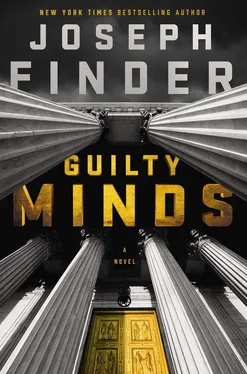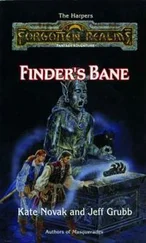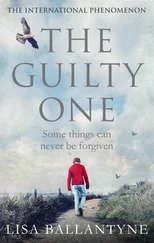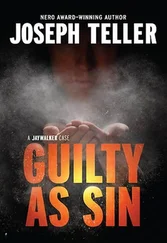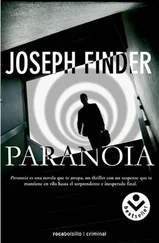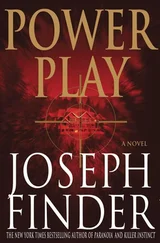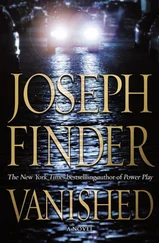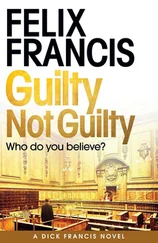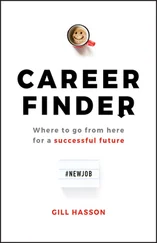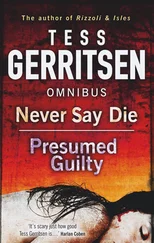I took a deep breath and then went into the bathroom and turned on the light. The blood on the tub and the tile wall had dried. There was blood on the floor as well, next to the tub. It was reddish-brown and glossy. It was no easier to see it this morning than it had been last night. I stood and surveyed the scene. I saw the broken wineglass and the shards of glass on the vanity and the floor and decided I’d better get into some shoes or, barefoot, I’d get cut.
When I returned wearing a pair of sneakers, I stood at the verge of the bathroom, looked around again. Slowly. I tried to imagine how Kayla did it, if it was really a suicide. She’d been deeply frightened, no question, but would simply being frightened lead someone to kill herself? No, it didn’t make sense. But maybe the feeling of hopelessness caused by the situation she found herself in. That might be enough to do it.
Possibly. I thought it through.
So having decided to end her life, she looks around the hotel room for something to do it with. She’s going to slit her wrists, because she’s heard you can bleed out that way and die peacefully.
It wasn’t true, of course. The vast majority of people who cut their wrists survive. As many as ninety-nine percent. It’s most often a form of self-mutilation, a display, a cry for help, not an effective means of suicide. And it’s quite painful.
But maybe she doesn’t know this. Someone has to be in the one percent.
She doesn’t have a knife. She doesn’t even have a shaving razor. But she has a wineglass. She smashes it on the bathroom vanity and selects the sharpest shard.
She runs a bath, because that’s how she’s heard it’s usually done, in a bath. She tries; she pokes the shard of glass into the delicate skin on the inside of her wrist and discovers that it’s extremely painful. She runs it along a vein and then stops because it hurts so much. Those were the so-called hesitation marks that Detective Balakian had noticed. Homicide detectives look for hesitation marks as evidence of a true suicide. Textbook , Balakian had called it. This is textbook, man .
I stopped.
Textbook .
Either poor Kayla really did kill herself or someone made it look that way. And if someone killed her and set it up to look like a suicide, whoever did it was no amateur. No, it was someone who knew what a suicide scene should look like. Right down to the hesitation marks.
It was a professional. It had to be. Someone who knew what a homicide detective would look for.
I couldn’t help but think of Curtis Schmidt, a former DC cop.
A former cop.
But I realized I was getting ahead of myself. I had no reason other than instinct, gut feeling, to believe it wasn’t a suicide.
The doorbell sounded in the next room. It had to be my coffee.
I went back to my room and let in the room service guy with the trolley. I had some coffee, then took a shower and got dressed. I looked respectable even if I felt like a wreck. A caffeinated wreck, at least.
After my third cup of coffee, I called down to the hotel’s front desk and was told the security director wouldn’t be in until nine. So I returned to Kayla’s bathroom. I stood and looked over the blood spatter and tried to find meaning and logic in it, a pattern of some sort. The tub had been emptied, but dried blood remained on the tiled wall behind the tub, on the tub’s ledge, and on the floor. Most of the blood, I assumed, would have come when the carotid artery was severed. That would have been a gusher, spewing blood everywhere, as far as the floor beyond the tub.
And that was what I was struggling with. If someone had killed her — slashed at her neck and wrists while she was in the tub — he’d have been hit with blood. He’d have tracked it elsewhere in the bathroom or in the hotel room in general. He couldn’t help it. It would have gotten on his clothes, on his hands, and there would be traces of it here and there. Smeared on the door handle or on the toilet’s flush lever. In the sink or on the vanity.
But there was nothing. The place was clean. I scanned carefully the bathroom walls and floors and the toilet and the vanity. And didn’t see any blood. I turned and faced outward and got down on my hands and knees and crawled around the carpet, searching for a dark fleck, a smear. A trace of blood. I was doing the sort of minute search that Detective Balakian and his crew should have done, and might have, if they weren’t so convinced it was a suicide.
Nothing.
I stood and, hunched over, examined the carpet, the path between the bathroom and the door. But nothing. After twenty minutes of this, I stopped. I was starting to lose focus.
Kayla’s killer, if there was a killer, had been neat and thorough and extremely careful.
Or maybe there was no killer. Maybe she had really killed herself, a tragedy of another sort.
I went to the bathroom to wash my hands, which were soiled from running them across a carpet that needed to be vacuumed better. The killer, if there was a killer, would have washed his hands right here. He’d have gotten blood on his hands, for sure. He’d have gotten blood on the basin, maybe on the faucet handles. But they were clean. I shut off the hot and cold handles, and then some little tickle in the back of my brain caused me to look at them more closely. I turned the cold lever all the way on, and there, on the back side of the lever, was a dark stain.
At first it looked like rust. But I looked closer and confirmed: It was a splotch of blood.
I shut the water off and then peered again at the backside of the lever. It was definitely dried blood.
But how did it get there?
It couldn’t have been Kayla. Someone in the process of killing herself wouldn’t bother to wash her hands. If it was Kayla, there would be blood drips visible elsewhere, between the tub and the sink, on the vanity, on the floor.
Someone had cleaned the bathroom thoroughly but missed one out-of-the-way spot.
To me, it said homicide. But I was no expert.
At nine o’clock I tried the hotel security director again. I told him I was a hotel guest and had a few questions for him.
“Oh, you’re in the suite, number three twenty-two,” he said. “Yes, I just heard, I’m so sorry.” He told me to come to his office on the first floor behind reception.
He was an elegantly dressed, dark-skinned man named Wanyama. His accent, his British-inflected diction, sounded African, probably Kenyan. He was soft-spoken and polite in manner. He sat at a small desk, crowded with loose-leaf binders and manuals, that probably was shared with others.
“My condolences,” he said. “It’s so painful when a loved one takes her own life.”
I didn’t want to tell him I barely knew her, so I just said, “Thank you.”
He nodded.
“I’d like to know whether she used her keycard at all last night.”
“Her... key?”
“Yes. I know your PMS, your property management system, records all uses of room keys. There’s a log. An audit trail. I’d very much appreciate it if you’d check your database.”
“I understand. I’m awfully sorry, but we can only give out that sort of information to the police.”
“It’s my room. I paid for it. I have the right to know if she left the room at some point and then came back in.”
He looked at me for a few seconds. Then he nodded and turned to his computer. He entered a few keystrokes. “The key was issued at 7:16 P.M. last night, and according to our system it was used just once.”
I thought for a moment. I’d escorted her to her room and used her keycard to open the door to her room. I’d considered withholding the key from her so she didn’t get any ideas about leaving the room and going someplace where I couldn’t protect her. But in the end I left the card on the desk in the room. I’d asked her to stay in the room, and she did.
Читать дальше
